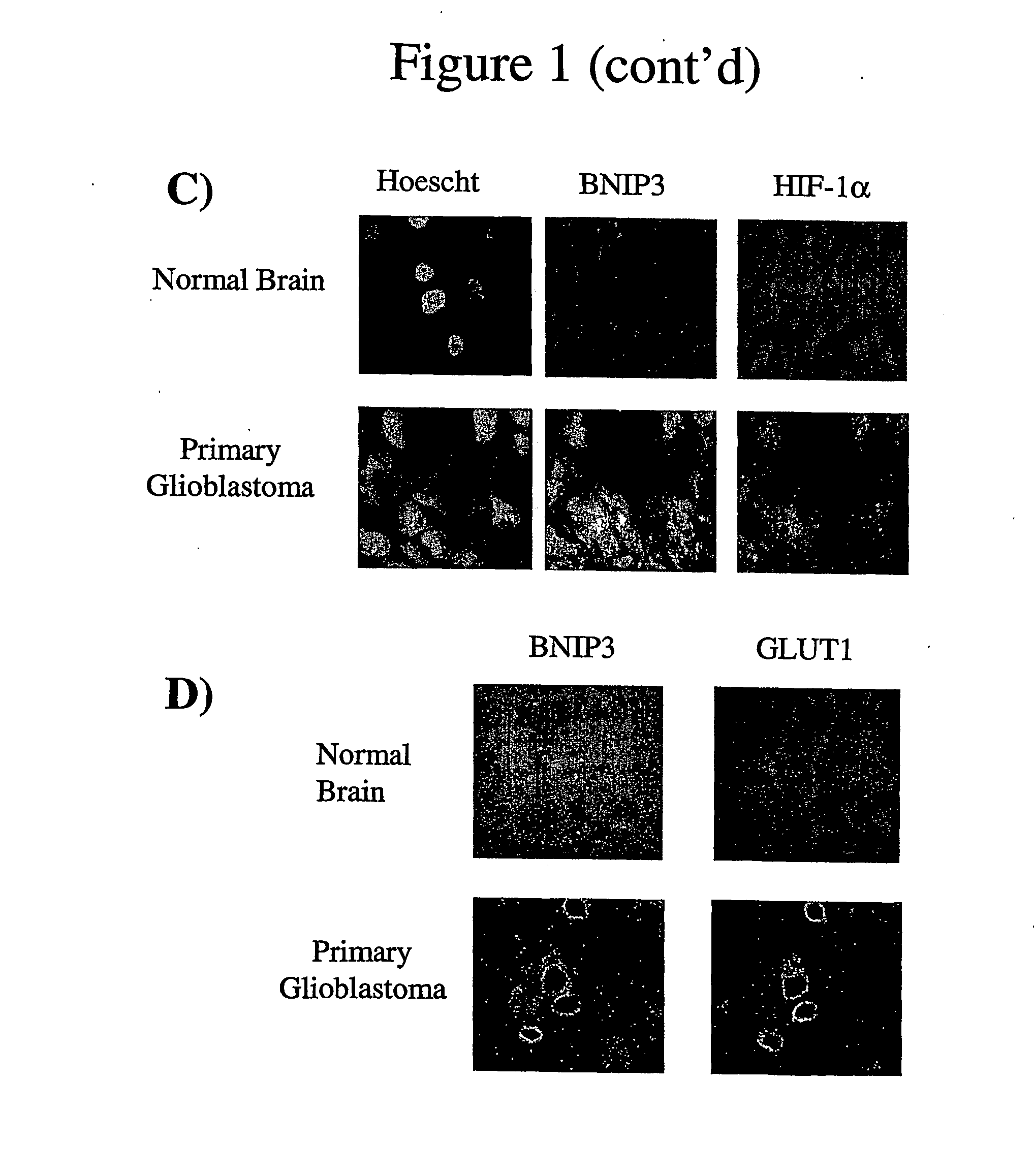Methods for detecting cancer and monitoring cancer progression
a cancer and cancer technology, applied in the field of methods and kits for detecting and monitoring the progression of cancer, can solve the problems of induction of cell death, inability to detect cancer progression, and unclear what function bnip3 plays in the hypoxic region of tumors
- Summary
- Abstract
- Description
- Claims
- Application Information
AI Technical Summary
Benefits of technology
Problems solved by technology
Method used
Image
Examples
example 1
[0077] Malignant gliomas are the most commonly diagnosed brain tumor (1,2). Tumor hypoxia is a major limitation in treating these tumors with radiation and chemotherapy (3,4). The Bcl-2 Nineteen Kilodalton Interacting Protein 3 (BNIP3) is a hypoxia-inducible pro-apoptotic member of the Bcl-2 family transcriptionally activated by HIF-1α (5,7). BNIP3 binds to mitochondria through its transmembrane (TM) domain and induces cell death (5,8,9). Although BNIP3 is expressed at high levels in hypoxic regions of tumors, it paradoxically fails to induce cell death (7,10). In this example, the inventors have determined that BNIP3 is expressed at high levels in hypoxic regions of primary (or de novo) glioblastoma multiforme (GBM) tumors compared to normal brain. It has been discovered that BNIP3 is mutated in 33% of GBM tumors leading to a truncated protein with elimination of the TM domain. Tumor-derived mutant BNIP3 fails to induce cell death, localize with the mitochondria or induce loss of m...
PUM
| Property | Measurement | Unit |
|---|---|---|
| Electrical resistance | aaaaa | aaaaa |
| Nucleic acid sequence | aaaaa | aaaaa |
Abstract
Description
Claims
Application Information
 Login to View More
Login to View More - R&D
- Intellectual Property
- Life Sciences
- Materials
- Tech Scout
- Unparalleled Data Quality
- Higher Quality Content
- 60% Fewer Hallucinations
Browse by: Latest US Patents, China's latest patents, Technical Efficacy Thesaurus, Application Domain, Technology Topic, Popular Technical Reports.
© 2025 PatSnap. All rights reserved.Legal|Privacy policy|Modern Slavery Act Transparency Statement|Sitemap|About US| Contact US: help@patsnap.com



